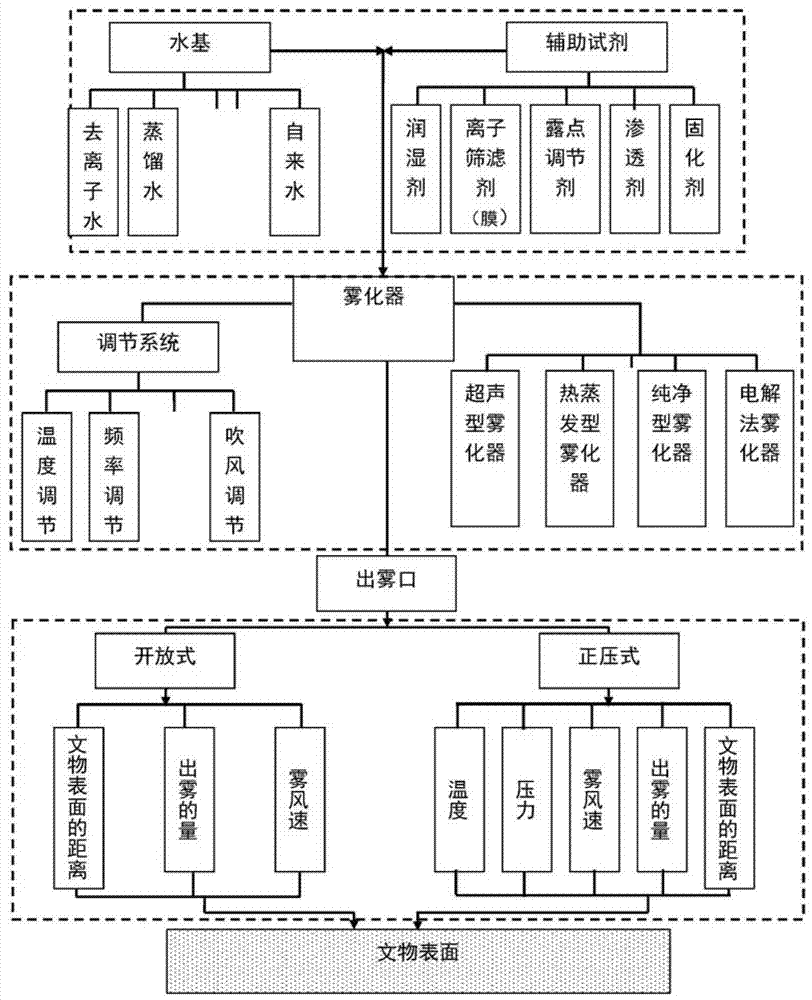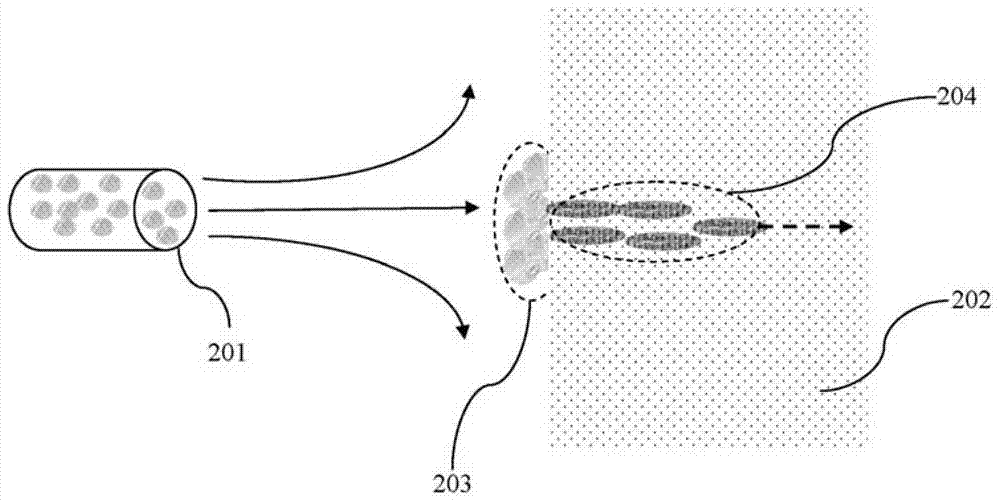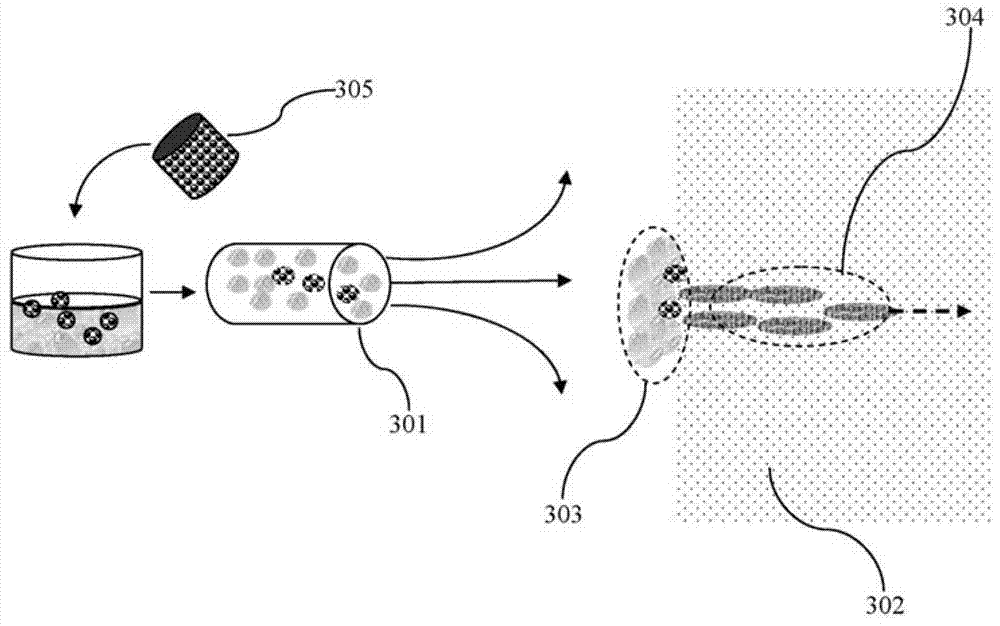Atomizing vapor salt controlling technology
A technology of atomizing vapor and technology, which is applied to coatings, devices for coating liquids on surfaces, etc., can solve the problem of difficulty in applying cultural relics protection research, non-contact salt control research, and technology reports and fragility to a large scale. cultural relic damage and other issues, to achieve the effect of meeting the requirements of complexity and diversity, avoiding pollution damage, and reducing the risk of salt damage
- Summary
- Abstract
- Description
- Claims
- Application Information
AI Technical Summary
Problems solved by technology
Method used
Image
Examples
Embodiment 1
[0042] Such as figure 2 As shown, measure 100ml of deionized water, add it into the atomization cup of the ultrasonic nebulizer, and adjust the distance between the nozzle 201 of the nebulizer and the simulated cultural relic sample 202 to be 5.0cm. The optimal distance is that the surface of the simulated cultural relic sample has no obvious condensed water droplets, turn on the atomizer, and atomize the simulated cultural relic sample at an atomization rate of 1.5ml / min. The concentration of salt on the surface of the simulated cultural relic samples decreased continuously with the adsorption and migration of the atomized water. The atomization treatment time was 5.0 hours, and the depth of the atomized water vapor infiltrating into the simulated cultural relic samples was 2.0 cm.
Embodiment 2
[0044] Such as image 3 As shown, first measure 100ml of deionized water, put it in a 200ml beaker, then measure 0.1% (vol%) wetting agent ethanol 305, pour it into deionized water, mix thoroughly with a magnetic stirrer, and mix Add the liquid into the atomization cup of the ultrasonic nebulizer, adjust the distance between the nozzle 301 of the nebulizer and the simulated cultural relic sample 302 to about 5.0cm, the best distance is that there is no obvious condensed water droplets on the surface of the simulated cultural relic sample, and turn on the atomization The device is used to atomize the cultural relics simulation sample at an atomization rate of about 1.5ml / min. The atomized water vapor 303 and condensed water 304 carrying soluble salts migrate from the surface of the cultural relics simulation sample to the inside, so that the concentration of salt on the surface of the cultural relics simulation sample With the absorption and migration of atomized water, it decr...
Embodiment 3
[0046] First, the operation is the same as in Example 2. After 2.0 hours of atomization treatment, change the atomization cup, then measure 100ml of deionized water, place it in a 200ml beaker, then measure 1.0% (vol%) curing agent PS, pour it into After fully mixing with a magnetic stirrer in deionized water, add the mixed liquid into the atomization cup of the ultrasonic nebulizer, and adjust the distance between the nozzle of the nebulizer and the simulated sample of cultural relics to be about 5.0cm. There are no obvious condensed water droplets on the surface of the simulated sample. Turn on the atomizer and atomize the simulated cultural relic sample at an atomization rate of about 1.5ml / min. The atomized water vapor and condensed water carrying soluble salt will flow from the surface of the simulated cultural relic sample to the inside Migration, so that the concentration of salt on the surface of the simulated sample of cultural relics decreases continuously with the ad...
PUM
 Login to View More
Login to View More Abstract
Description
Claims
Application Information
 Login to View More
Login to View More - R&D
- Intellectual Property
- Life Sciences
- Materials
- Tech Scout
- Unparalleled Data Quality
- Higher Quality Content
- 60% Fewer Hallucinations
Browse by: Latest US Patents, China's latest patents, Technical Efficacy Thesaurus, Application Domain, Technology Topic, Popular Technical Reports.
© 2025 PatSnap. All rights reserved.Legal|Privacy policy|Modern Slavery Act Transparency Statement|Sitemap|About US| Contact US: help@patsnap.com



